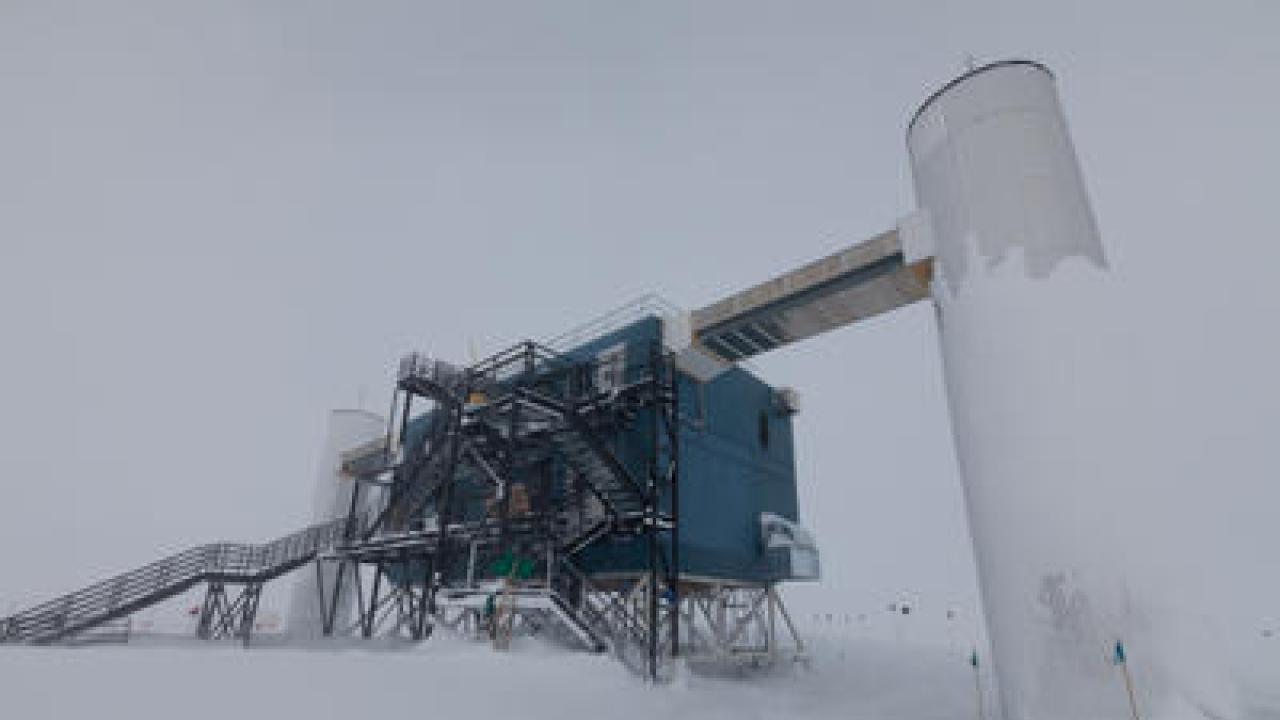
In June, ICTP and The Italian Institute for Nuclear Research
co-sponsored a workshop on cosmic rays and neutrinos called
"Looking at the Neutrino Sky--NUSKY 2011." About 90
participants attended the week-long event, which featured 40
presentations given by the main players in the field, and intensive
discussion sessions.
The talks covered all substantial aspects of the production,
propagation and detection of high energy cosmic neutrinos.
The neutrino sky "seen" by detectors such as ANTARES and IceCube
is the atmospheric shining, day and night, by neutrinos. IceCube,
based in Antarctica, has already detected more than 100,000
atmospheric neutrino events. But scientists hope to detect
something more: astrophysical neutrinos. Once produced,
astrophysical neutrinos can travel cosmological distances and reach
the Earth practically without interactions and deviations (except
from gravitational lensing), thus carrying unique information on
sources of cosmic rays, their acceleration and composition. The
detectors could help scientists learn more about far away neutrino
sources like supernovae, gamma ray bursters, and active galactic
nuclei--the most energetic phenomena in the Universe--and maybe
even dark matter.
One highlight of the workshop was the discussion of preliminary
data from IceCube, which was a recurring topic throughout many of
the talks. So far, no astrophysical neutrino events have been
identified, but even this negative result is of great importance.
The programme's final speaker was the principle investigator at
IceCube, Francis Halzen from the University of Wisconsin in the
United States. Halzen spoke about the challenges involved in
building the detector and about his hopes and expectations for its
future.
In the theoretical part of the workshop, a wide range of topics
was discussed. For example, Alexander Kusenko, professor of physics
and astronomy at UCLA, spoke about the necessity of a holistic,
multi-messenger approach to active galactic nuclei studies. He also
argued that the increasing fraction of heavy nuclei with energy, as
seen by the Pierre Auger Cosmic Ray Observatory in Argentina, may
testify (due to the difference in diffusion times for protons and
nuclei) for galactic sources of cosmic rays, probably unusual
supernovae, hypernovae or gamma ray bursters. When cosmic rays
interact with protons and photons of different energies they
produce astrophysical neutrinos.
A main conclusion from the workshop is that further collection of
data from detectors will have serious impact on the understanding
of the neutrino sky.
For details on the workshop, visit its website.
















